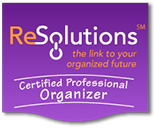
With the rise of remote work, many couples and roommates find themselves sharing a home office. While this setup can be efficient, it can also present challenges. Maintaining productivity, managing space, and respecting each other’s work styles are crucial for a harmonious shared office. Here are some tips for organizing a shared home office space to ensure both of you can work effectively without losing your minds.
- Define Individual Work Zones
Having distinct areas for each person helps minimize disruptions and creates a sense of personal space, even in a shared environment.
- Use furniture to separate spaces: Desks or bookshelves can serve as physical barriers.
- Personalize your area: Decorate your space with personal items to create a comfortable and individualized work zone.
- Use rugs or carpets: Different rugs can visually delineate each person’s workspace.
- Manage Cables and Tech
Cables and tech clutter can quickly become overwhelming in a shared space, leading to confusion and accidents.
- Cable management systems: Use cable trays, clips, or sleeves to keep cords organized.
- Label chargers and cables: Clearly label which cables and chargers belong to whom to avoid mix-ups.
- Shared tech solutions: Consider shared printers or scanners to save space, ensuring they are placed in a neutral area.
- Establish Ground Rules
Clear guidelines help manage expectations and reduce conflicts, creating a more harmonious work environment.
- Set work hours: Agree on designated work hours to minimize disruptions.
- Noise levels: Use headphones for calls or music and agree on acceptable noise levels.
- Breaks and social time: Coordinate breaks to catch up and socialize without interrupting work time.
- Organize Supplies and Documents
Keeping supplies and documents organized prevents clutter and ensures that both of you have access to what you need without interrupting the other.
- Shared storage: Use labeled bins or drawers for shared supplies like paper, pens, and office tools.
- Personal storage: Each person should have their own storage for personal items to avoid confusion.
- Document management: Use digital storage solutions or a well-organized filing system to keep documents in order.
- Optimize Lighting
Proper lighting reduces eye strain and boosts productivity, especially in a shared space where lighting needs might differ.
- Task lighting: Use adjustable desk lamps for focused lighting.
- Natural light: Position desks near windows to take advantage of natural light.
- Ambient lighting: Ensure the room has adequate overall lighting to avoid dark corners and shadows.
- Personalize Shared Areas
Adding personal touches to shared spaces can make the office feel more welcoming and reduce stress.
- Wall art and decor: Choose artwork or decor that both of you enjoy.
- Plants: Add plants to improve air quality and create a more pleasant environment.
- Comfort Items: Include items like cushions or throws that enhance comfort for both.
- Use Noise-Canceling Tools
In a shared office, noise can be a significant distraction. Noise-canceling tools help create a more focused work environment.
- Noise-canceling headphones: Invest in good-quality noise-canceling headphones to block out distractions.
- White noise machines: Use a white noise machine to create a consistent sound environment.
- Soundproofing: Consider adding rugs, curtains, or acoustic panels to dampen noise.
- Plan for Flexibility
Flexibility in your shared office setup can accommodate changing needs and prevent conflicts.
- Movable furniture: Use lightweight or wheeled furniture that can be easily rearranged.
- Flexible schedules: Be willing to adjust work schedules or space usage as needed.
- Temporary workstations: Create secondary workstations, like a laptop-friendly space in another room, for days when you need extra separation.
Photo: Pixabay

 Join My Email List
Join My Email List








